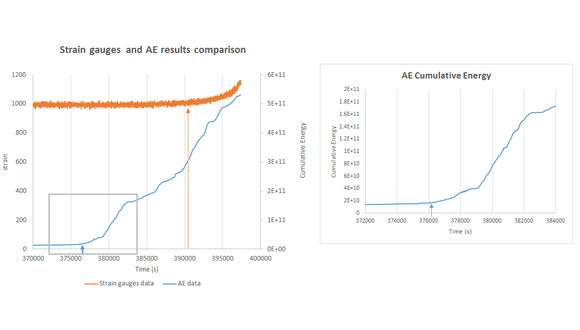Tue, 28 July, 2020
TWI has been working as part of the Horizon 2020 S4CE Project to develop, test and implement technologies to detect, quantify and mitigate against the risks associated with sub-surface geo-energy operations.
TWI joins 22 other partners, including those from academia, industry and research. Our role relates to the development of best practice procedures and an assessment of well integrity and monitoring techniques.
The monitoring techniques that are being assessed include Acoustic Emission (AE) and Vibration Analysis (VA) to determine the integrity of metal tubing and the concrete casings in the sub-surface.
Vibrations in the geothermal well can be caused by the turbulent flow in the pipe that, at certain frequencies, causes reverberations in the pipe, where energy is at a maximum. At TWI’s laboratory facilities we have prepared testing to simulate the environment these techniques will encounter in the real-life situation in order to assess their suitability for the tasks.
To simulate this environment, well casings were tested to failure for fatigue close to the resonance frequency, and monitored with acoustic emission sensors and accelerometers. The aim is to compare the two monitoring techniques for detecting cracking in well casings.
Two casing were tested, a plain healthy casing of 4.4m long and a casing with a VAM connector, and the results were compared to the readings from standard strain gauges, which are normally used for this type of resonance fatigue testing.
The casings were pressurised at 300psi, which produced a mean stress of 10MPa, using water that acted as a means of through-wall crack detection. The specimens were tested in a resonance fatigue test machine. A rotating force was applied at one end of the specimen at a frequency of around 30Hz, which excites the specimen into the first mode of vibration.
A notch was opened on the plain casing at its highest stress area to control the location of the crack during the testing.
Both tests ran until through wall cracking occurred. Crack initiation was detected and recorded by all three techniques during both tests, however, acoustic emission sensors were able to detect the change earlier than strain gauges or vibration accelerometers.
In the case of the plain pipe, AE cumulative energy results showed that the technique was able to detect cracks approximately 3 hours 45 minutes earlier than strain gauges and vibration accelerometers.
